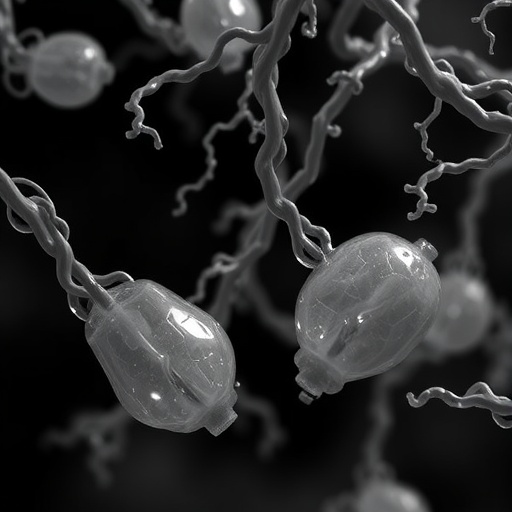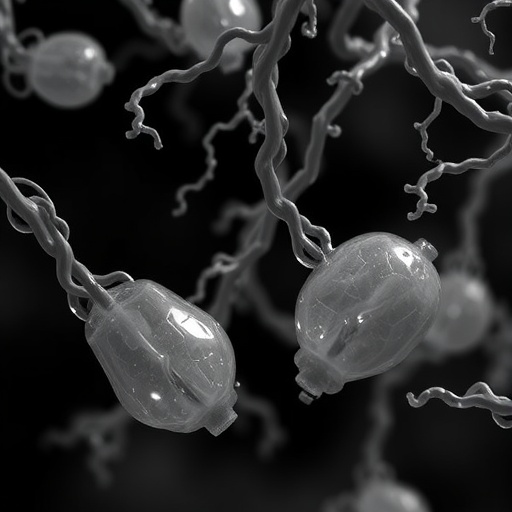
In the evolving landscape of cancer therapies, the necessity to address the adverse effects of chemotherapeutics on reproductive health is gaining prominence. Doxorubicin, a widely used chemotherapeutic agent, is known for its efficacy in targeting various malignancies, yet it poses significant risks of ovarian injury in female patients. A new study explores the protective effect of ammonium trichloride tellurate (AS101) against doxorubicin-induced ovarian damage in a rat model. This research presents a promising avenue for safeguarding female fertility during cancer treatment, marking a potential breakthrough in oncological care.
The research unit led by Zhai and colleagues demonstrated that while doxorubicin is effective in combating cancer cells, its collateral damage extends to ovarian tissues, leading to a condition that can result in infertility and hormonal imbalances. Ovarian injury from chemotherapeutic agents can manifest as a reduced oocyte count, follicular atresia, and ultimately, complications in hormonal regulation. This finding is particularly critical as it highlights the importance of developing adjunct treatments that can mitigate such side effects, thus preserving the quality of life and reproductive potential of female cancer survivors.
In their study, the authors investigated the therapeutic effects of AS101, a compound known for its anti-inflammatory and antioxidant properties. The use of AS101 in the context of chemotherapeutic treatment aims to protect ovarian tissue from the oxidative stress and inflammatory response typically induced by doxorubicin. By administering AS101 to rats subjected to doxorubicin treatment, the researchers sought to delineate the extent to which this compound can ameliorate the damaging effects of chemotherapy.
The methodology of the study involved a series of controlled experiments, where groups of rats received different combinations of doxorubicin and AS101. Subsequent evaluations were performed to assess ovarian function, hormonal levels, and histopathological changes in ovarian tissues. This rigorous approach allowed the researchers to draw concrete conclusions about the protective effects of AS101 when used in conjunction with doxorubicin.
Results from the findings revealed a significant reduction in the indicators of ovarian injury in rats treated with AS101 alongside doxorubicin. The authors reported that AS101 administration positively influenced ovarian morphology, preserved follicular density, and maintained hormone levels that are crucial for reproductive health. These outcomes suggest that AS101 has the potential to counteract the damaging effects typically associated with chemotherapy, offering a protective shield for ovarian tissues.
Furthermore, the biochemical analysis of serum samples indicated that AS101 may mitigate the oxidative stress caused by doxorubicin, which is a known contributor to cellular damage. The antioxidant properties of AS101 appear to play a vital role in this protective effect, highlighting the importance of free radical scavengers in therapeutic interventions aimed at reducing chemotherapeutic toxicity.
This study not only contributes to the understanding of ovarian preservation during chemotherapy but also opens the door for further research into the application of AS101 in clinical settings. As oncologists strive to improve treatment protocols, the incorporation of protective agents like AS101 could fundamentally change the dynamic of cancer treatment for women, allowing for a more comprehensive approach to care that includes fertility considerations.
While the results are promising, the transition from animal models to human applications requires further investigation. The authors aptly point out that extensive clinical trials will be essential to establish safe and effective dosages of AS101 that can be utilized alongside standard chemotherapy regimens without any adverse effects. This step is crucial to ensure that the protective measures can feasibly translate into routine clinical practice for cancer patients.
The study’s implications extend beyond just the preservation of ovarian health. By addressing the side effects of chemotherapy comprehensively, the potential to enhance the overall quality of life for cancer survivors is significantly increased. Health professionals can advocate for treatments that not only aim to eradicate cancer but also respect and protect the overall well-being of their patients.
In summary, the innovative research presented by Zhai and colleagues reinforces the importance of re-evaluating standard cancer treatment protocols to ensure they are not only effective in fighting cancer but also considerate of long-term consequences for female patients. The protective effect of AS101 against doxorubicin-induced ovarian injury sheds light on the critical need for integrative approaches in oncology—where efficacy meets compassion in the fight against cancer.
This study is an outstanding step forward in the realm of reproductive health amidst cancer therapy. The findings underscore the necessity for continued research efforts aimed at exploring safe and effective adjunct treatments to chemotherapy, advocating for not just survival, but also for the preservation of fertility and hormonal balance in female cancer survivors.
The significance of this work resonates well beyond the laboratory, engaging with the ongoing conversation surrounding patient-centered care in oncology. By emphasizing the integration of fertility preservation strategies into conventional treatment frameworks, it is envisioned that personalized cancer therapies can be developed, thus allowing women facing similar challenges the hope and opportunity for a future of both health and motherhood.
In closing, as research progresses, there’s an optimistic outlook for future studies to not only validate these findings but also explore the applicability of AS101 in human subjects. The established link between oxidative stress and ovarian damage highlights a pathway worth pursuing, and the potential to revolutionize cancer care is on the horizon. For now, this remarkable study stands as a beacon of hope for millions of women diagnosed with cancer, intertwining the narratives of recovery and fertility preservation in the journey ahead.
Subject of Research: Protective effects of ammonium trichloride tellurate (AS101) on ovarian injury induced by chemotherapy drug doxorubicin.
Article Title: Protective effect of ammonium trichloride tellurate (AS101) on ovarian injury induced by chemotherapy drug doxorubicin in rats.
Article References:
Zhai, Y., Zhang, Y., Li, Y. et al. Protective effect of ammonium trichloride tellurate (AS101) on ovarian injury induced by chemotherapy drug doxorubicin in rats.
J Ovarian Res 18, 190 (2025). https://doi.org/10.1186/s13048-025-01709-z
Image Credits: AI Generated
DOI: 10.1186/s13048-025-01709-z
Keywords: Ovarian injury, doxorubicin, ammonium trichloride tellurate, chemotherapy, fertility preservation, oxidative stress, cancer treatment, reproductive health.
Tags: adjunct treatments for chemotherapy side effectsammonium trichloride tellurateanti-inflammatory properties of AS101chemotherapeutic agents and reproductive healthdoxorubicin side effects on fertilityinfertility risks from chemotherapyoncology and reproductive health researchovarian injury and hormonal imbalanceovarian protection in cancer treatmentpreserving female fertility during chemotherapyrat model in cancer researchsafeguarding reproductive potential post-cancer



